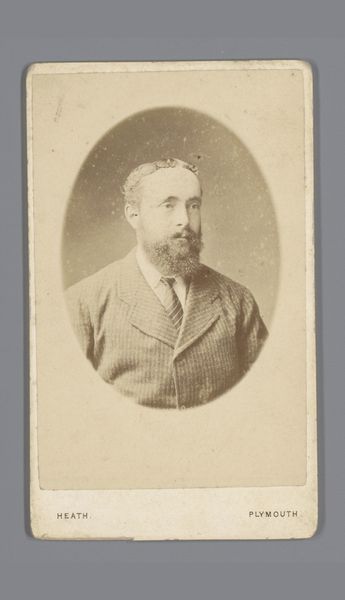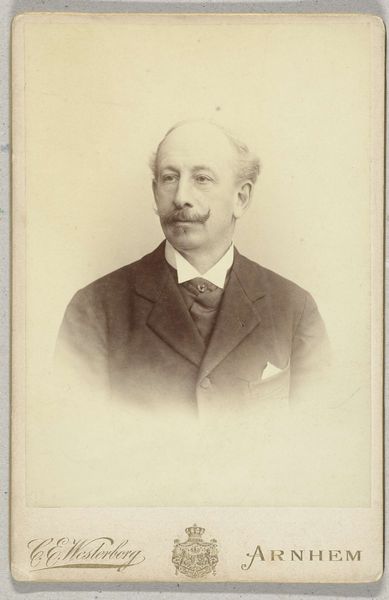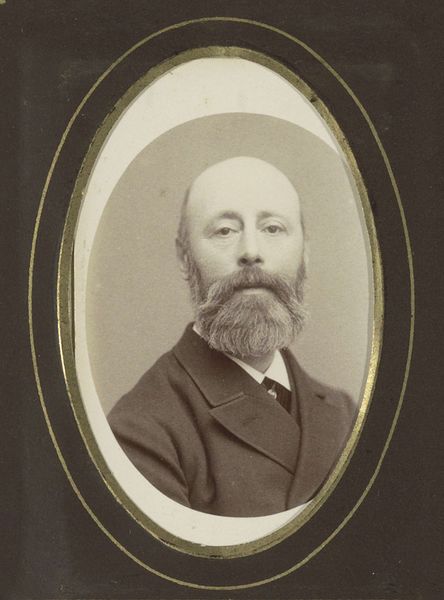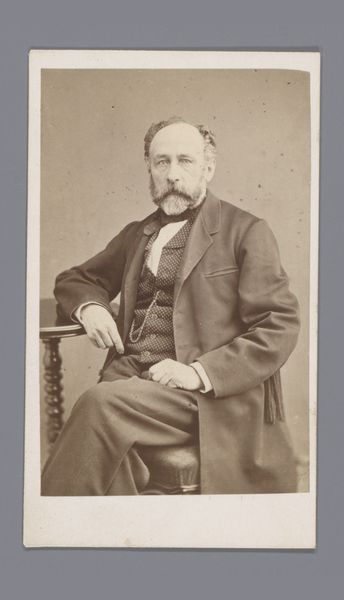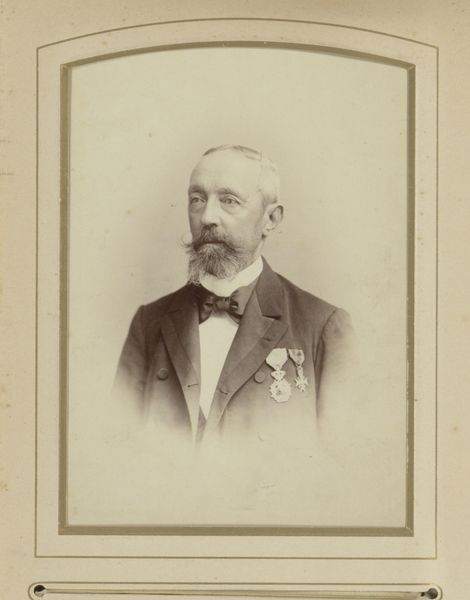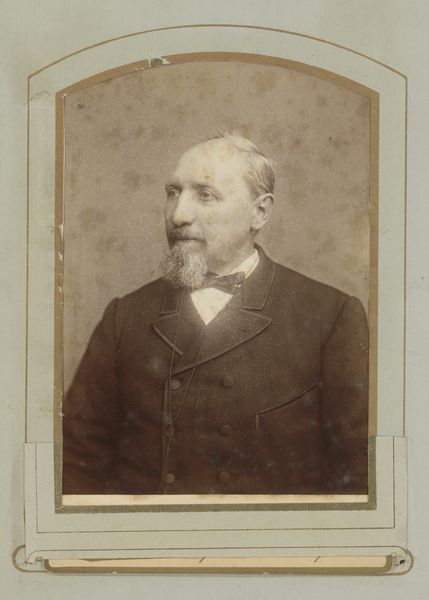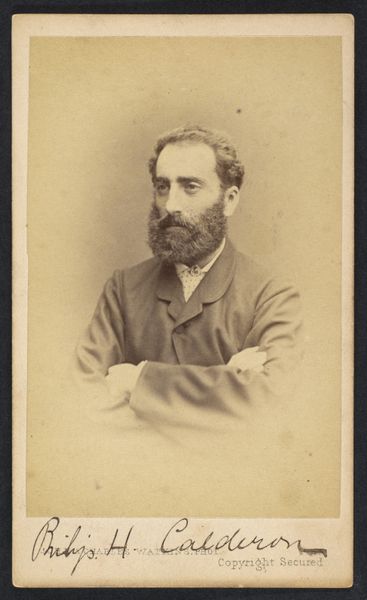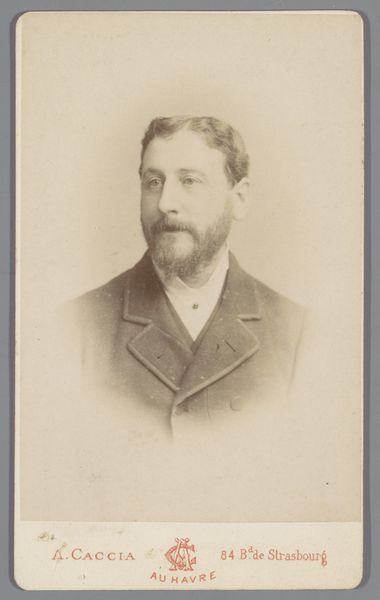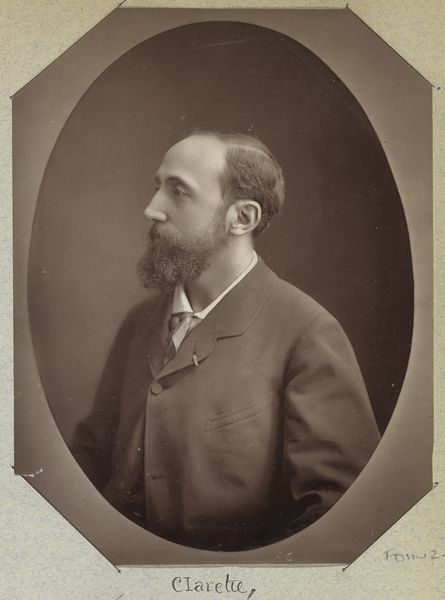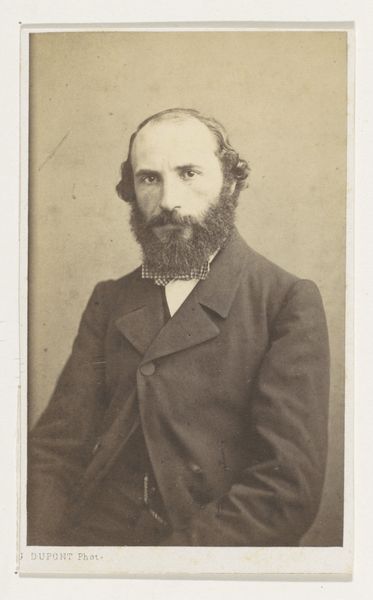
photography, gelatin-silver-print, albumen-print
#
portrait
#
caricature
#
photography
#
portrait reference
#
framed image
#
gelatin-silver-print
#
united-states
#
portrait drawing
#
portrait art
#
albumen-print
Dimensions: 3 3/4 x 2 3/8 in. (9.53 x 6.03 cm) (image)3 3/4 x 2 3/8 in. (9.53 x 6.03 cm) (mount)
Copyright: Public Domain
Editor: Here we have a gelatin silver print by Jeremiah Gurney, titled "James M. Wehli", dating from between 1869 and 1874. The sepia tones and the subject's serious expression give it a real sense of gravitas. What can you tell me about it? Curator: Looking at this portrait, I see not just an individual but a reflection of the socio-political power structures of the time. How does James M. Wehli, through his pose and attire, project an image of Victorian masculinity and authority? Consider the context: photography in the 19th century, its accessibility limited by wealth and social standing. Editor: That’s a good point; I hadn’t really thought about photography itself as a status symbol. The tight framing feels like it amplifies that sense of authority, almost imposing. Curator: Exactly. It’s not just a portrait, it's a constructed identity meant to communicate specific messages. The photographic process itself, with its inherent limitations and possibilities for manipulation, plays into this construction. We might ask: Whose voices were silenced, whose images were absent in the photographic landscape of this era? Editor: It makes me consider who *wasn't* having their portrait taken, and why. What stories aren't being told through these images? Curator: Precisely. And how this visual language reinforces societal hierarchies. What did this image communicate to viewers in the 1870s? How does that contrast with what it tells us now, in a different socio-political climate? Editor: I'm seeing now how something that appears straightforward – just a portrait – is actually layered with so much historical context and power dynamics. It's definitely shifted my perspective. Curator: Indeed. Analyzing this photograph, and others from the time, prompts crucial questions about representation, privilege, and the continuing impact of these images today.
Comments
minneapolisinstituteofart almost 2 years ago
⋮
An important part of New York City-based photographer Jeremiah Gurney’s business was making small-size portrait photographs. Beginning in the 1850s, cartes de visite (calling cards, or visiting cards) photographs were popular. They were often made with a four-lensed camera, capturing four of the same image at once. They were printed eight on a sheet and each photograph was mounted on a thick cardboard paper sized 2.5 in. by 4 in. Cartes de visite were shared among families and friends, and mostly were stored in photographic albums. However, by the early 1880s, cartes de visite were replaced by larger cartes de imperiale (cabinet card), also albumen prints, mounted on cardboard backs measuring 4.5 in. by 6.5 in. Because of their size, cartes de imperiale would have been visible from across the room. As such, they were often displayed using frames and small stands.
Join the conversation
Join millions of artists and users on Artera today and experience the ultimate creative platform.
